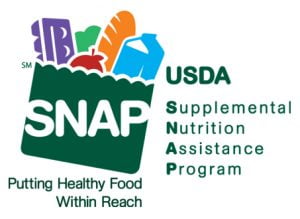
Electric Bills and Financial Survival
Timing is everything for low-income people who rely on federal benefits to survive.
For example, retirees who receive their Social Security checks early in the month and spend the money before the bills come in are more prone to fill the gap with high-cost payday loans than people who get their checks a few weeks later, a 2018 study found. New research in a similar vein shows that timing also matters for individuals who receive food aid under the federal Supplemental Nutrition Assistance Program, or SNAP.
 When the electricity bill arrives on or within a day of the monthly SNAP benefit, the lowest-income customers in this study were much less likely to have a past due bill or to have their power cut off than customers whose bills arrive well after their benefits.
When the electricity bill arrives on or within a day of the monthly SNAP benefit, the lowest-income customers in this study were much less likely to have a past due bill or to have their power cut off than customers whose bills arrive well after their benefits.
The timing is crucial, because SNAP supplies between 10 percent and 25 percent of household incomes up to 35 percent above the federal poverty level. When the government loads each month’s food benefit onto the card, it frees up money for high-priority bills coming due at the same time, including utilities.
This study took place in an unidentified New England state where recipients’ SNAP debit cards are refilled on the first day of every month.
After following the SNAP recipients for a full year, the researchers also found that the unpaid balances they had accumulated after 12 months were smaller if the bills coincided with the SNAP-card deposits. The advantages of a well-timed electricity bill were greatest in the poorest neighborhoods, the researchers said.
A separate analysis was limited to the SNAP recipients in the study who were over 65. Getting the electricity bill around the first of the month helped the retirees too, but less so than younger adults, probably because the retirees’ Social Security checks replenish their bank accounts later that month. Social Security deposits arrive on the second, third or fourth Wednesday of the month, depending on the retirees’ birth date.
The researchers said utility companies might put these results to practical use: if bills were sent out to coincide with their low-income customers’ SNAP payments, the utilities could help themselves and their customers.
To read the study, authored by Lint Barrage, Ian Chin, Eric Chyn, and Justine Hastings, see “The Impact of Bill Receipt Timing Among Low-Income and Aged Households: New Evidence from Administrative Electricity Bill Data.”
The research reported herein was derived in whole or in part from research activities performed pursuant to a grant from the U.S. Social Security Administration (SSA) funded as part of the Retirement and Disability Research Consortium. The opinions and conclusions expressed are solely those of the authors and do not represent the opinions or policy of SSA, any agency of the federal government, or Boston College. Neither the United States Government nor any agency thereof, nor any of their employees, make any warranty, express or implied, or assumes any legal liability or responsibility for the accuracy, completeness, or usefulness of the contents of this report. Reference herein to any specific commercial product, process or service by trade name, trademark, manufacturer, or otherwise does not necessarily constitute or imply endorsement, recommendation or favoring by the United States Government or any agency thereof.






